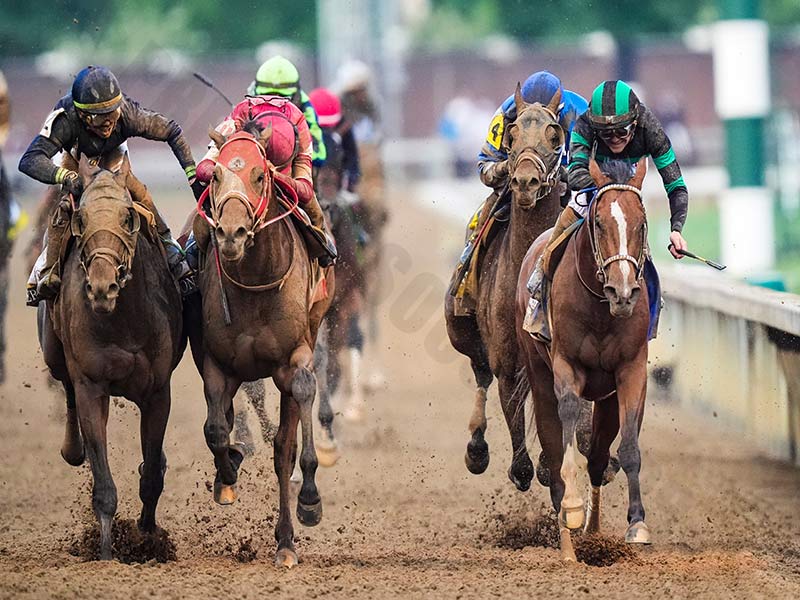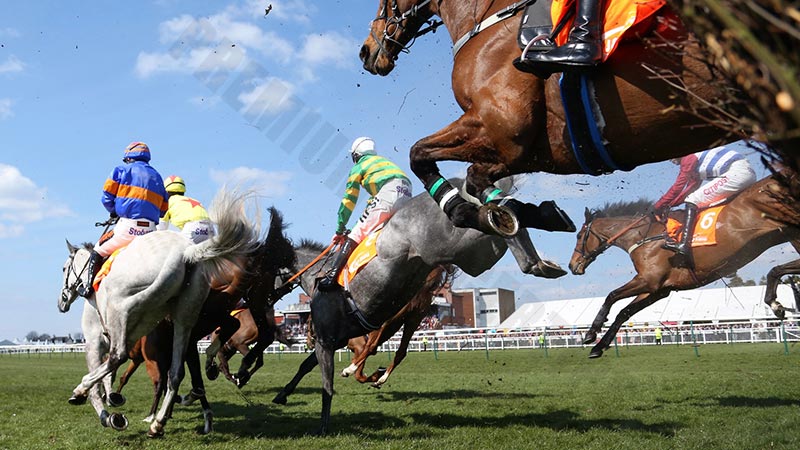Learn about horse racing betting rules for beginners
Horse racing betting rules are fairly straightforward, but it’s worth revisiting them since there isn’t a direct comparison with other sports. Often, the jargon and complexities of horse racing can make certain betting rules confusing. In this guide, premiumsoccertips will help you understand everything you need to know about the basic rules of horse racing.

Horse Racing Rules
It’s crucial to understand the exact rules surrounding your bet, regardless of what the bet may be. When it comes to horse racing, you need to be precise to avoid betting on the wrong horse at the wrong time. While some of the information below may seem obvious, clarifying the rules always makes for sharper play.
Post Time
The scheduled start time of the race is known as the “post time.” It refers to the moment when the horses reach the starting gate. Bets are accepted until the horses are released from the gate. Once the horses have started, all bets are closed.
Post Position and Entry Numbers
Although each horse has a name, it would be cumbersome and time-consuming for fans at the track to go to the window and say, “Two dollars to win on Sporty Girl,” then have the ticket seller look up which number and which race Sporty Girl is running. Instead, each horse is given a number that usually corresponds to its post position.
Typically, number one will be closest to the rail, number two will be outside number one, and so on. Before placing a bet, refer to the program or racing form and make sure you know the numbers of the horses you want to bet on.
Number of Allowed Entries
When multiple horses owned by the same person or group are running in the same race, they are combined into a betting interest. This means that when you bet on one of them, you get both. The entries are almost always numbered 1 and 1A, although they don’t necessarily start from the rail. If you want to bet on an entry, simply indicate number one.
It wouldn’t be fair for an owner to have two horses in the same race and be able to bet on one but not the other. Worse still is an owner entering one horse to assist another, but in doing so jeopardizes its own chances. That’s why we have entries; if an owner wants multiple horses in the same race, that’s fine, but they are paired betting entries: bet on one and you get both.
Betting by Race Number
Even if you intend to bet on the Kentucky Derby, when you call to place a bet, speak to a teller in person, or bet online, each race is identified by a number.
If the Kentucky Derby is the 11th race out of 13 on Derby Day at Churchill Downs, indicate that you want to bet on race 11. There are many tracks and races occurring on the same day, so be attentive!

On weekends, there may be several dozen tracks running on the same day, with half of them running at the same time. Knowing you want the 3rd position in the 6th race isn’t enough; you need to specify which track you are betting on.
If the Kentucky Derby is race 11, ensure you are betting on the right horse in the right race at Churchill Downs. Be sure to do your due diligence.
Scratches: When Horses Are Listed but Not Racing
An owner or trainer has the absolute discretion to decide that they don’t want their horse to run in a race they had previously entered. For health reasons, the track veterinarian can also decide to scratch a horse.
If you bet on a horse that is scratched in an individual race, you will receive a refund. If you bet on a scratched horse in a multi-race wager (like a parlay), you will receive a refund, a consolation payout, or in some cases, your bet will be transferred to the favorite in the race when the gates open.
Dead Heat
A tie may not happen in the NBA or baseball, but sometimes two or more horses hit the wire simultaneously. In the event of a tie, known as a dead heat in horse racing, bets placed on the tied horses are declared winners. However, since there are more winning tickets than if only one horse had won, the payout amounts are reduced accordingly.
The higher-priced horse will still pay more than the lower-priced horse, proportionately, as it’s more challenging for a 10/1 horse to finish at the same time as a 2/1 horse. The final odds still matter in dead heat scenarios.

In the case of a tie, losing bets are redistributed so the money is allocated evenly among the winners. For example, if there is $10,000 to be divided, $5,000 will go to those who picked the 2/1 horse and $5,000 will go to the 10/1 tickets. However, since there are five times more 2/1 tickets than 10/1 tickets, the payout will be five times larger for those with the 10/1 horse.
If these odds and pari-mutuel payouts seem confusing, refer to our guide on horse racing terminology as well as our guide on understanding sports odds and payouts.
Inquiry
If a horse or jockey breaks the rules during a race, the stewards may conduct an inquiry. A horse that dangerously cuts off another horse, collides with a competitor, or obstructs a horse with a fair chance to finish higher in the race may be disqualified or placed behind the horse they interfered with in the final order of finish.
Types of Horse Racing
There are four different types of horse racing: Flat Racing, National Hunt Racing, Harness Racing, and Endurance Racing. In the UK, Flat and National Hunt races are the predominant categories, widely televised, covered in the media, and bet upon.
Flat Racing
This type (or ‘code’) of horse racing is described by its name: Flat races are conducted on level racecourses without obstacles. These races focus on speed rather than agility over jumps and can range in distance from five furlongs to two miles.
Horses racing over five furlongs are called sprinters, while those racing from a mile and a half to two miles are called ‘stayers.’ ‘Middle-distance’ horses race over distances from more than seven furlongs to one mile.
Flat racehorses can begin racing at two years old and can be colts (entire males under five years old), fillies (females under five years old), geldings (castrated males), mares (females over five years old), or horses (entire males over five years old).
Flat races take place on both turf and all-weather surfaces. The turf season runs from late spring to autumn, while the all-weather season spans the winter.
National Hunt Racing (or ‘Jump Racing’)
This code of racing involves races where horses must clear obstacles – these can be hurdles (smaller jumps designed to be cleared quickly) or steeplechase fences (larger jumps requiring significant jumping ability and strength).
These races are longer than Flat races, range from two miles to four miles, and run at a slower pace than Flat races.

National Hunt horses can be geldings, mares, or fillies. Colts and entire horses are not seen in National Hunt racing.
In this code, there are several races known as ‘National Hunt Flat Races’ – these are races for young, inexperienced horses without obstacles, designed to provide experience for the runners.
Harness Racing
Present in the UK, although not very popular, harness racing is widely televised and viewed in Europe, Australia, and the United States. In these races, horses pull a sulky (a light two-wheeled cart) at a trot around the track with a driver instead of a rider. These horses can trot up to twenty miles per hour and, like Flat and National Hunt horses, must be of the appropriate breed and properly trained to compete.
Endurance Racing
Similar to harness racing, endurance racing also takes place in the UK but is not widely publicized or noticed by the media. Endurance races can span from 5 to 150 miles over challenging terrain and typically last from one to three days.
Conclusion
Now that you know the basic Horse racing betting rules, you’re ready to place your bets! Online horse betting is legal in over 30 states. Find an online site from our list of partners that offers generous sign-up promotions. All betting activities may seem daunting at first, but over time, they will become second nature.
See more: How to bet on golf always wins that players should know








